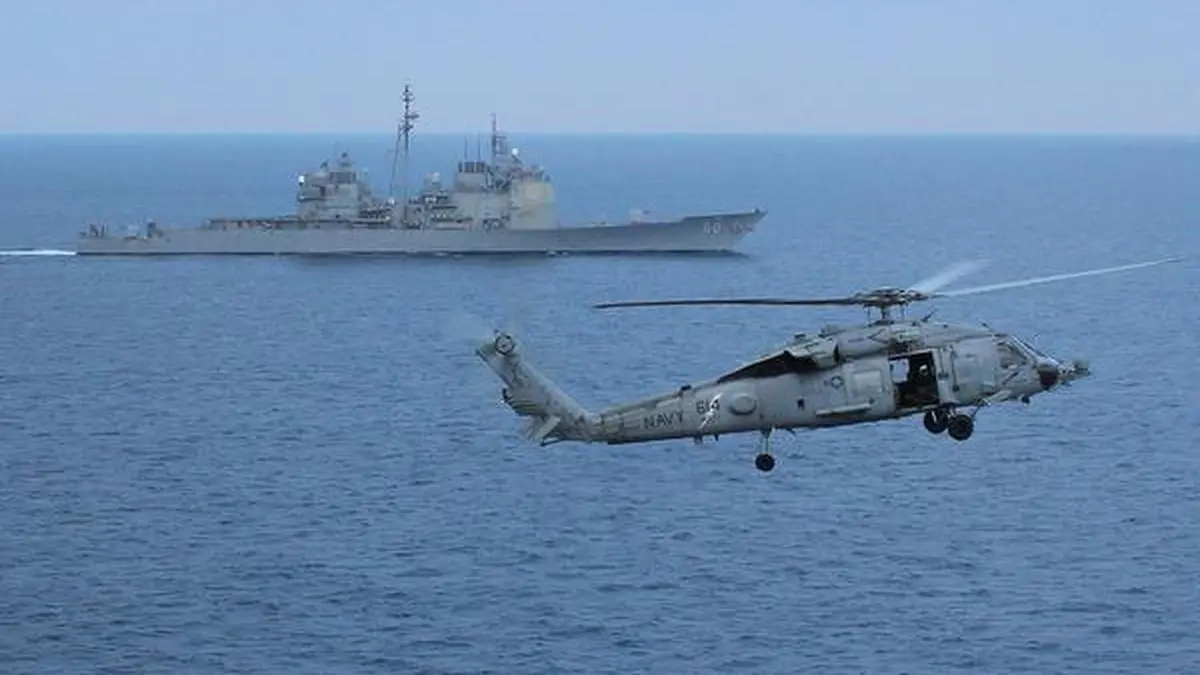[ad_1]
Even as India was preparing to launch lethal strikes on terror camps in Pakistan, Paras Defence & Space Technologies announced a strategic joint venture with HevenDrones in Israel, an independent subsidiary of Heven — a US-based global company that is recognised for its autonomous, hydrogen-powered and mission-specific drones.
The JV will establish a new entity in India to design, manufacture and supply next-generation drone systems tailored for India’s defence and homeland security landscape, with long-term plans to address global markets.
Paras is a defence engineering company specialising in advanced cutting-edge optics, optronic systems and defence solutions.
businessline caught up with Munjal Sharad Shah, Managing Director of Paras, to discusses the company’s strategic defence initiatives, their timely joint venture and how they’re positioned to support India’s immediate security needs following recent attacks.
What is your assessment of India’s current border security preparedness following recent attacks like Pahalgam, and Operation Sindoor?
The recent escalation underscores a hard reality: persistent surveillance and rapid response are no longer optional — they’re urgent necessities. At Paras, we’re acutely aware of this shift. Our focus right now is on enabling real-time intelligence and countermeasures through surveillance technologies that can be deployed without delay. We’ve accelerated domestic manufacturing and are working closely with the Ministry of Defence and other users to ensure that what’s needed at the border can be delivered in weeks, not months.
How is your joint venture with Israel’s HevenDrones addressing this urgency on the ground?
Our partnership with HevenDrones is built around the immediacy and operational reliability. These are not prototype technologies — they’ve been tested on Israel’s highly volatile borders. What makes them game-changers for India is their endurance and autonomy. We’re introducing hydrogen-powered drones that can remain airborne five times longer than current systems, and are virtually silent, making them ideal for round-the-clock monitoring. One model can hover 500 metres above ground, maintaining surveillance over vast areas continuously.
What specific gaps in surveillance or tech do these drones aim to close? Could they have made a difference in an incident like Pahalgam?
Absolutely. The core issue exposed by incidents like Pahalgam is the lack of persistent aerial visibility across vulnerable terrain. Our hydrogen-powered drones bring the ability to maintain uninterrupted surveillance, especially at night and in difficult weather conditions, where human patrols and traditional systems fall short. The drones come equipped with stabilised optical payloads, thermal imaging and wide-area coverage — enabling early detection, tracking and rapid threat assessment before attackers cross over or mobilise.
Has there been a surge in procurement interest from Indian defence agencies in the recent times?
Yes, we’re in active discussions with multiple defence agencies for the immediate deployment of these technologies. The recent attacks have accelerated the pace of these talks, and the expectation is that some of these projects will move into execution mode very soon. The advantage we bring is that our manufacturing infrastructure is already in place, and the tech we’re offering has been proven in live conflict environment. This gives us an edge in these conversations.
How does the Heven JV compare with existing Indian drone systems, in terms of battlefield advantage?
What sets Heven’s systems apart is their battlefield validation. These drones have operated under real combat stress in Israel — against drones, missiles, and coordinated attacks. That matters when you’re protecting human lives. While many Indian systems are evolving well, our JV combines Israeli combat readiness, US aerospace inputs (via Heven’s American subsidiary), and Indian scale — delivering high-impact, high-reliability platforms that are ready now. They’re not experimental; they’re deployable.
Will these drones remain limited to military use or find roles in civilian security too?
While our top priority is military deployment along the western and northern borders, the systems we’re building are inherently dual-use. That means they can be adapted for large-scale civilian surveillance as well — in ports, power stations, border villages, and even disaster response. This versatility also helps scale production faster and bring down costs, which is critical for long-term sustainability.
When will the hydrogen-powered drones be operational in India?
We’re already in a position to roll them out. They’re currently deployed in conflict zones and are being adapted for Indian requirements. Through our JV, we’re the first in India to offer these extended-endurance surveillance systems, and we expect initial deployment to begin in select zones within a very short timeframe, possibly weeks.
How does this strategic shift elevate Paras Defence’s role in India’s security architecture?
It marks a transformation. From being a subsystem supplier, we are now a full systems integrator offering rapid-response, battle-tested platforms. By aligning with ‘Make in India’ policy and ensuring a high level of indigenous content, we’re becoming a dependable, scalable defence partner — helping lead it, especially in surveillance, optics and UAVs.
Your Q4 profit surged 97 per cent. How does that financial strength enable your defence ambitions now?
Strong financials give us the runway to scale rapidly and invest where it matters. Our growth — nearly 50 per cent annually — helps us move from promise to delivery fast. We’ve reinvested into high-capacity manufacturing, new R&D, and expansion of our UAV segment. As tensions rise, our ability to offer turnkey solutions is a direct result of that financial muscle.
Is there a shift in focus from exports to domestic defence priorities given the border situation?
Yes, we’ve been exporters for over a decade, but our immediate focus is India. The western and northern borders are front and centre now. That said, our international tech partnerships remain critical — they give us access to proven solutions that we can localise quickly. Exports will continue, but India’s requirements are now taking precedence.
How are you balancing shareholder interests with your R&D investments amid this critical national security phase?
We’ve always been a dividend-paying company, and we intend to stay that way. Our shareholders understand the value of long-term defence investments. What helps is that our defence strategy is already yielding results — so we’re able to reward investors while still ploughing capital into innovation, especially for border security.
What was the rationale behind your recent 1:2 stock split?
It was about accessibility and liquidity. A split helps more investors come on board and participate in the defence growth story. With the sector under the spotlight, broadening investor interest strengthens our capital base and keeps us agile in responding to urgent national requirements.
Lastly, where does your space business fit in the defence-focused growth?
Right now, defence dominates our revenues, particularly surveillance and targeting systems. However, our space capabilities are complementary. For example, we’ve developed a hyperspectral imaging system with ISRO and DRDO for satellite deployment, which will aid in aerial and orbital monitoring of hostile zones. These are dual-use platforms that enhance our overall security footprint — from the ground to the sky and beyond.
[ad_2]
Source link


